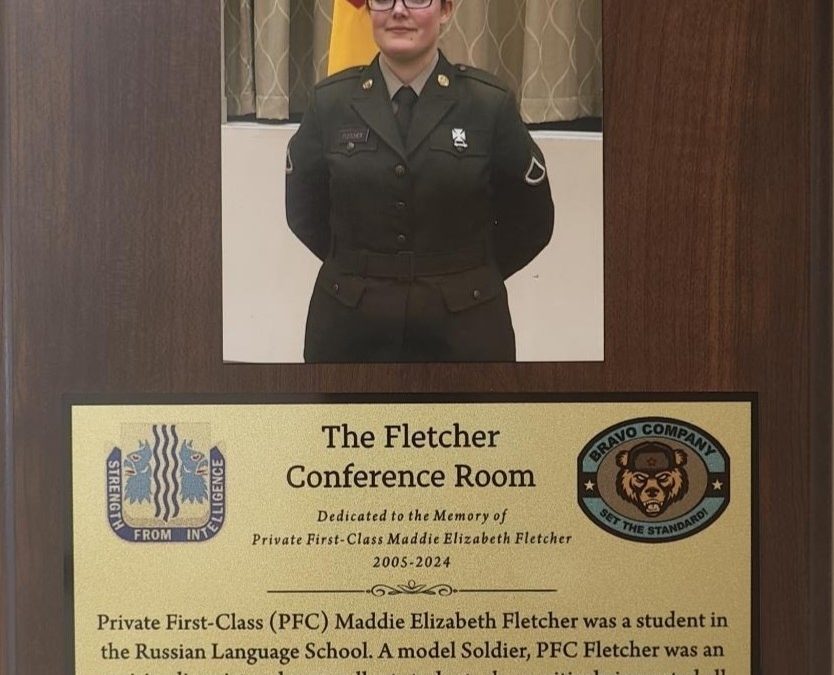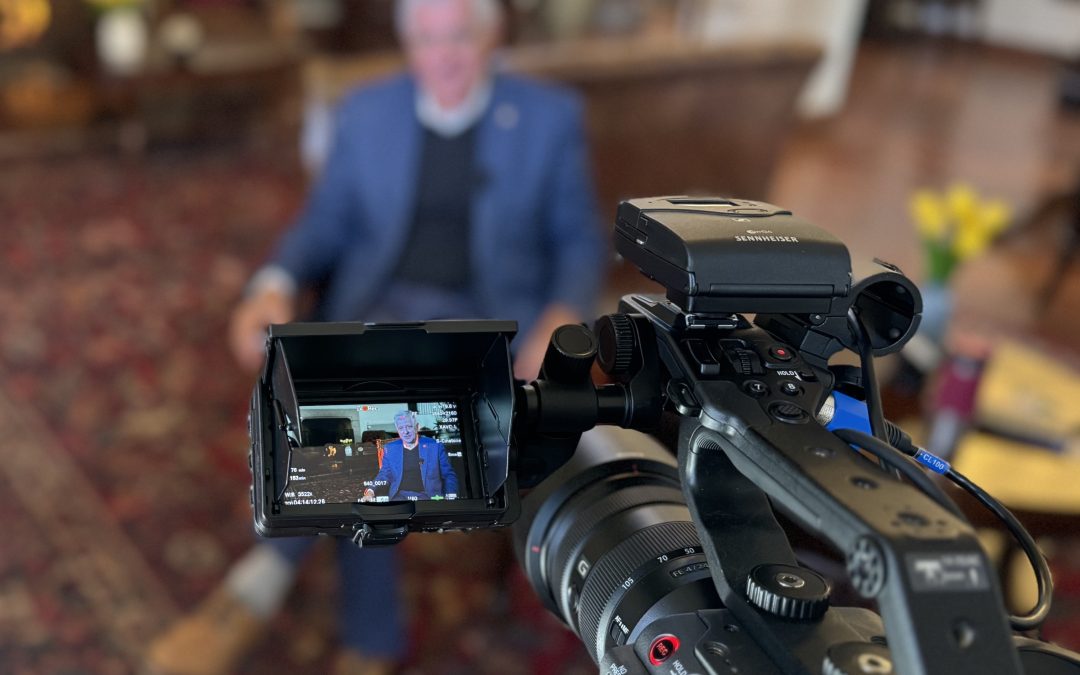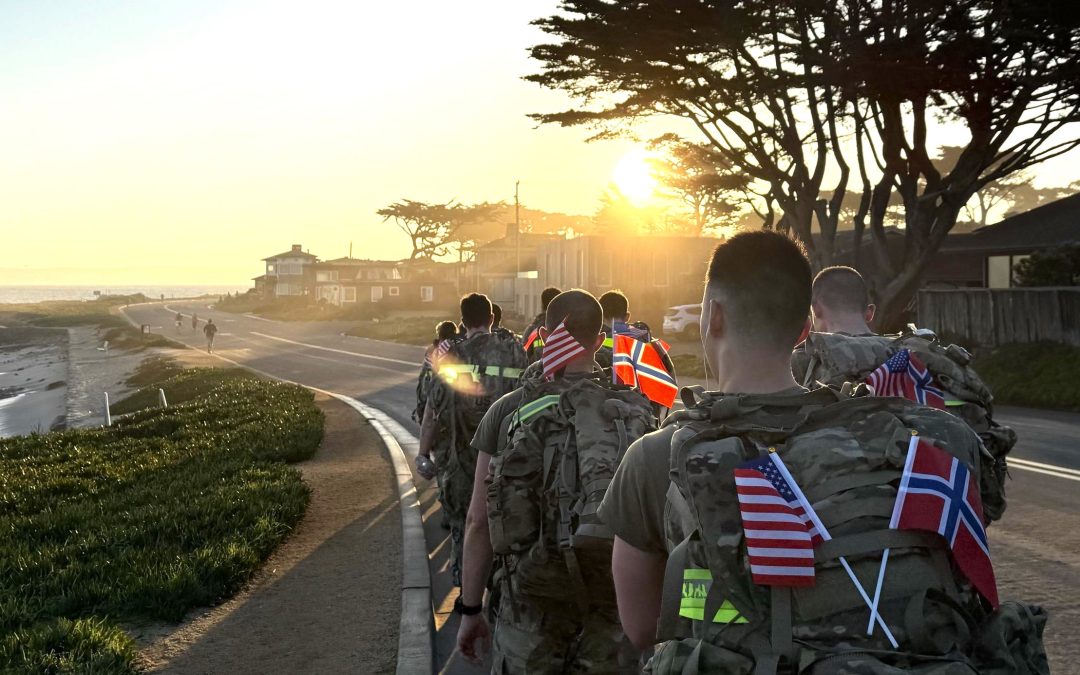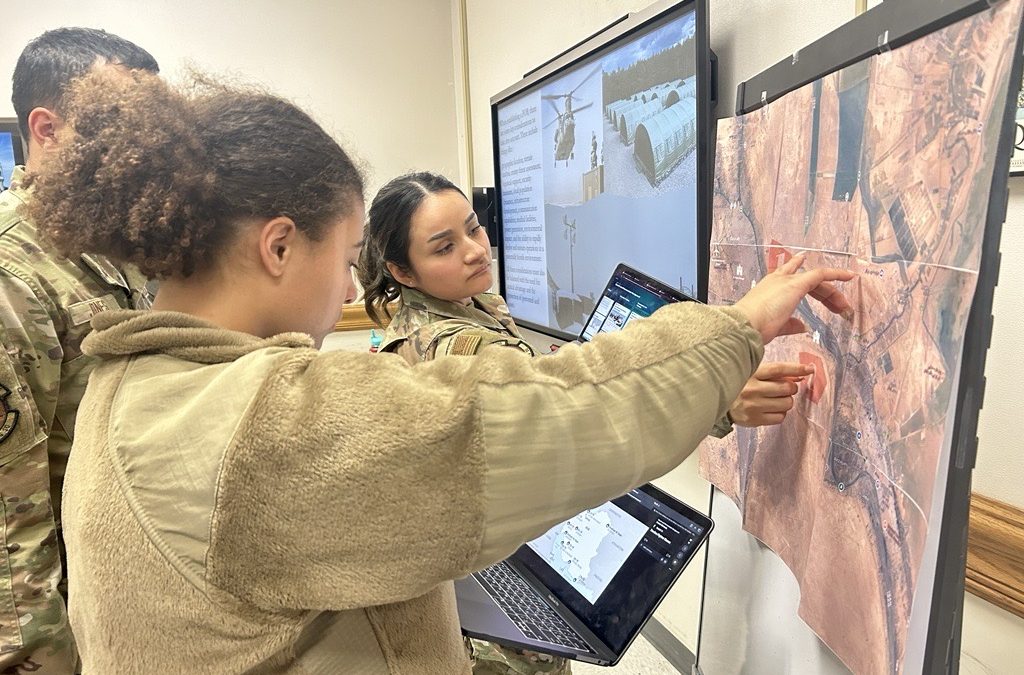By Patrick Bray
DLIFLC Public Affairs

Gen. David Perkins, the commanding general of the U.S. Army Training and Doctrine Command at Fort Eustis, Virginia, speaks to students studying Arabic at the Defense Language Institute Foreign Language Center at the Presidio of Monterey, California, Feb. 9. (Photo by Patrick Bray, DLIFLC Public Affairs)
MONTEREY, Calif. – The Defense Language Institute Foreign Language Center welcomed Gen. David Perkins, the commanding general of the U.S. Army Training and Doctrine Command at Fort Eustis, Virginia, to the Presidio of Monterey, California, Feb. 9.
Perkins visited a classroom in the institute’s Middle East I school where he interacted with some of the students who are learning Arabic. Afterwards, he spoke about DLIFLC as an example in the upcoming Army University, which will be a premier learning institution that prepares Soldiers and civilians to win in the future security environment.
“Something we are trying to increase and propagate in the Army is that we want you to continue your education and your level of self-development,” said Perkins. “For the rest of your life we want you to build tools to stay connected to the community of learning, and I think DLIFLC is really setting a great example of how we do that.”
Since 2002, service members attending the institute have been able to earn an accredited Associate of Arts degree in foreign language upon successful graduation from their program. Nearly 12,000 associate degrees have been awarded since DLIFLC became accredited by the Accrediting Commission for Community and Junior Colleges of the Western Association of Schools and Colleges. The Army has succeeded in making it possible for students to receive the two-year college degree with 45 DLIFLC credits and 18 units transferred from other accredited institutions or authorized sources.
“In many ways, DLIFLC is a part of an example we want to propagate throughout the rest of the Army in that they get accredited courses here and they are recognized around the world,” said Perkins.

Gen. David Perkins, the commanding general of the U.S. Army Training and Doctrine Command at Fort Eustis, Virginia, speaks to students studying Arabic at the Defense Language Institute Foreign Language Center at the Presidio of Monterey, California, Feb. 9. (Photo by Patrick Bray, DLIFLC Public Affairs)
The Army continues to modernize its professional military education in order to improve the quality of professional training, development and schooling that its Soldiers and civilians receive. Perkins spoke further about how he expects Army University, which encompasses all 37 TRADOC schools including DLIFLC, to be a game changer in the professionalism of both Soldiers and civilians.
“From an Army University point of view, not only does it allow us to credential and accredit courses that our Soldiers take, but it raises everyone’s game to a higher level,” said Perkins. “If you want to be accredited you’ve got to have well developed faculty, great resource tools, and the students have to perform at a high level.”
Accreditation through Army University will also allow Army schools to partner with other colleges and universities, the same way DLIFLC did with MIT, for example, to develop tools for students to access in and out of the classroom.
“Because DLIFLC has a recognized level of expertise and excellence, that makes MIT want to work with them because they are a well know entity,” said Perkins. “That is exactly what we want to do within other organizations within TRADOC and the Army.”
Dr. Branka Sarac, director of technology integration, and Dr. Tamas Marius, director of language technology evaluation and assessment, showed the general some of the language training products produced by DLIFLC that are available for pre-deployment training, deployment use or refresher training.
“Some of the technology that I just saw – the web access, voice recognition, self-paced distance learning – I think that is going to be key so that people other than just professionally trained linguists have at least a minimum background in language and culture,” said Perkins.
Through technology, Perkins would like to see language and culture training given to the total force as he spoke about the ever-changing role of training in the military. For 75 years, linguists have been trained at DLIFLC. Graduating with a high level of proficiency, they go on to become the language experts at the units to which they are assigned, but as Perkins points out, these language experts are too few.
“I think what we’re going to find in the future is that it is not enough. When we send a unit to a particular region for regional alignment we are going to want a level of language and cultural proficiency throughout the formation and we can’t send them all to DLIFLC,” said Perkins, reemphasizing how the institute’s online language training products can assist regionally.
Speaking further about regionally aligned forces, Perkins said, “The world is going to get more and more complex.”
“No matter what mission we give our Soldiers, Sailors, Airmen and Marines they are going to be in an environment with multiple cultures, multiple languages, and multiple backgrounds all simultaneously interacting with each other. This is a level of complexity that we are not used to,” said Perkins.
The Army also expects Army University to better prepare Army professionals to operate successfully in a global environment by increasing foreign partnerships and regional studies, especially for regionally aligned forces.

Dr. Tamas Marius, director of language technology evaluation and assessment at the Defense Language Institute Foreign Language Center, shows Gen. David Perkins, commanding general of U.S. Army Training and Doctrine Command, a language-learning app developed by the institute Feb. 9. Command Sgt. Maj. Matildo Coppi, the institute’s command sergeant major, looks on. (Photo by Patrick Bray, DLIFLC Public Affairs)
Education is the most reliable strategic investment the Army can make to address Army warfighting challenges. Speaking another language and understanding the cultures of other nations will help the Army in building foreign partnerships and enhance cooperation with those countries.
The Defense Language Institute Foreign Language Center provides resident instruction in 23 languages at the Presidio of Monterey, California, with the capacity to instruct another 65 languages in Washington, D.C., graduating more than 200,000 linguists since 1941.
In addition, multiple language training detachments exists at sites in the U.S., Europe, Hawaii and Korea spanning all the U.S. geographic combatant commands, to support the total force.




